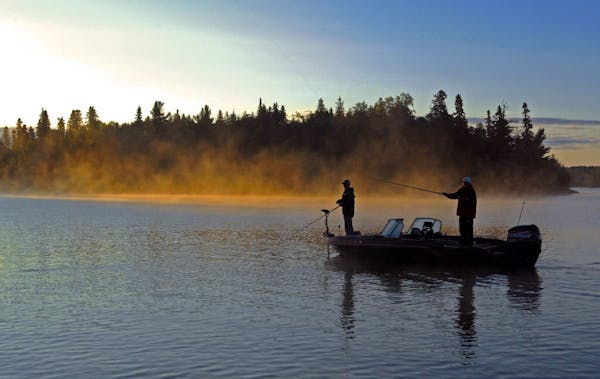The Fond du Lac Band of Lake Superior Chippewa and the Minnesota Department of Natural Resources have agreed to work together on a formal proposal to reintroduce elk north of Hinckley on the eastern side of the state.
The two sides are far from making a decision, but the latest development assures that the idea that was first kicked around in 2014 continues to advance. In a matter of months, there should be a draft proposal available for public review and comment, said Mike Schrage, wildlife biologist for the band.
"Nobody has a plan yet to put elk on the landscape, but it's another step,'' Schrage said.
Barb Keller, who leads the DNR's big game program, said the agency is going along and working to get more details on what a restoration of wild elk would look like in three potential target areas.
"We haven't said, 'Yes, we're doing this,' '' Keller said.
But Schrage and Keller both said it's possible that Minnesota would use the state's existing herds of wild elk in northwestern Minnesota as the source of animals to re-establish an eastern elk range. There's an overabundance of wild elk in central Kittson County, prompting the DNR to expand hunting this year. Friday is the deadline to apply for those permits.
"It's something to consider, for sure,'' Keller said of the idea to capture elk and transfer them.
Schrage said a key step forward for the project arrived earlier this year when the Fond du Lac tribal council voted to keep exploring the idea. The nod followed studies by the University of Minnesota that showed suitable habitat and solid public support for a return of elk in three study areas. Elk lived extensively across Minnesota until settlers cleared land and hunted them to near-extinction by the early 1900s.
One of the new study areas, dubbed Cloquet Valley, is northwest of Duluth. A second area known as the Fond du Lac study area is west of Duluth and the Nemadji study area is just north of Hinckley, along the Wisconsin border. The three areas are comprised mostly of public land, ample food resources and low road densities.
Of the three sites, Cloquet Valley is the largest with 680 square miles. The university habitat study concluded that the area could support at least 335 elk and as many as 550. In general, Minnesota's proposed new sites were judged to be similar in biological carrying capacity as reintroduced elk ranges in Michigan and in Wisconsin's Black River area.
Schrage said the proposal he'll work on over the next several months will delve into a variety of issues. How many elk do you start with? Which of the three study areas would be first to receive elk? Where and when in the chosen area would elk be released? Over what period of time would the reintroduction of elk take place? What considerations should be given to keep the animals disease-free? How would you manage the herd for size? What parameters would be placed on hunting elk in the new range? How much money would it take to fund the project? Where would the money come from?
Wild elk have been a nuisance in parts of Kittson County, where they have damaged farm fields, destroyed fencing, and raided haystacks and other forage. The government has been paying for those damages, and any plan to start a new herd in the east and northeast would have to address the risk of similar conflicts.
Schrage said the document he'll be drafting will be a conversation-starter to share with the public. But it will be drafted in collaboration with the DNR because elk restoration can't be accomplished without DNR partnership.
"It's something to send up the flagpole,'' he said. "There's a lot of boxes that still need to be checked.''
The Rocky Mountain Elk Foundation has been a supporter of the idea and the university's feasibility study was funded by the Minnesota Legislature out of the Environment and Natural Resources Trust Fund.
Minnesota first reintroduced elk starting in 1913 with the acquisition of wild game from Jackson Hole, Wyo., and north or Yellowstone Park in Montana. Elk from a private farm in Ramsey County were added to the herd. Since then, three distinct herds developed: One in central Kittson County, one around Grygla and one international herd that moves between Manitoba and northeast Kittson County.
Keller said the Grygla area zone will be closed to hunting this fall because its elk population is below its goal. But hunting opportunities will expand in the central Kittson area to reduce population, she said. In this year's lottery for tags, DNR will distribute 42 permits, compared to 25 permits a year ago.
Two tags will be for bulls only to be taken from the international herd. The remainder will be tags for antlerless elk or tags that allow the harvest of a bull or a cow.
Tony Kennedy • 612-673-4213

Anderson: Building a new Waterville fish hatchery will help shorten the time between bites
Seth Lugo throws 7 scoreless innings, leads Royals past Tigers 8-0
Star driver Josef Newgarden fights back tears, accepts blame for breaking rules in IndyCar scandal
Oregon State and Washington State face player exodus amid realignment

